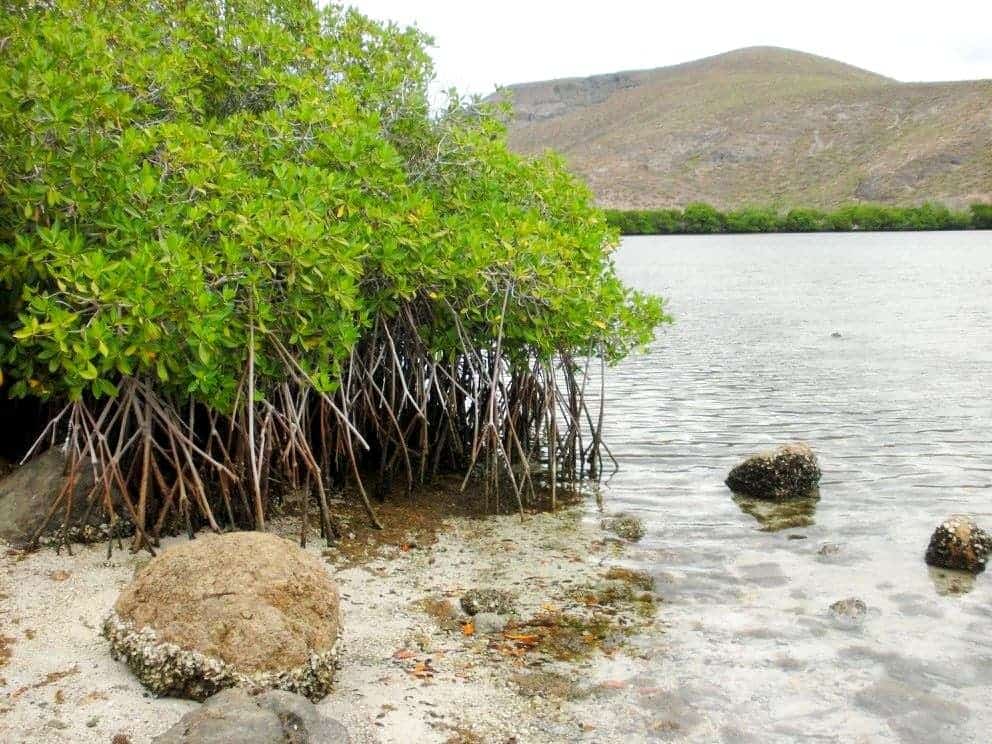Like any other coastal wetlands, mangroves are powerful carbon sinks – meaning they suck carbon dioxide from the air to store in their roots and branches. They do it so well that they can store carbon for over 5,000 years, according to a new study. This shows the key role mangroves can have in tackling the climate crisis, the researchers argued.

Researchers from UC Riverside and UC San Diego wanted to understand how marine mangroves off the coast of La Paz, Mexico, absorb and release elements like carbon – a process known as biogeochemical cycling. As this is driven largely by microbes, the researchers also wanted to learn which bacteria and fungi were living in the area.
They expected that carbon would be found in the layer of peat below the forest, but they didn’t expect that carbon would be over 5,000 years old. Emma Aronson, a senior co-author of the study and UCR microbiologist, said what’s special about the mangrove site isn’t that they store carbon faster than any other natural sink but the length of time they preserved it.
Understanding mangroves
Located at the interface of land and sea, mangrove forests belong to two worlds. Their branches provide shelter for snakes, lizards and birds, while their roots, when submerged, are nurseries for baby fish. Mangroves also provide benefits for coastal communities, as they act as storm barriers and protect inland areas from flooding.
But that’s not all. Mangroves also have a big impact on climate. Despite they are only found in tropical areas and cover about 140,000 square kilometers, they are powerhouses when it comes to carbon storage. Studies showed that they can capture four times more carbon than rainforests, which they store in the soil beneath the trees.

In their study, the researchers looked at how carbon and nitrogen densities and microbial community composition varied with peat age. Peat below mangrove trees is a combination of submerged sediment and decayed organic matter. In some areas sampled for the study, the peat layer extended about 10 feet (3 meters) below the water line.
“The deeper you go into the peat soils, the fewer microorganisms you find. Not much can break down the carbon down there, or the peat itself, for that matter,” said Mia Maltz, UCR microbial ecologist and study author. “Because it persists for so long, it’s not easy to make more of it or replicate the communities of microbes within it.”
Besides mangroves, there are other ecosystems known to have similarly aged or even older carbon, such as the Arctic and Antarctic permafrost where the ice hasn’t yet thawed. The researchers are now looking at other mangrove research sites in Florida, Hawaii and Mexico’s Yucatan Peninsula, hoping to find carbon stored for thousands of years.
Matthew Costa, the first author of the paper, said one way of keeping the climate crisis from worsening is to leave the mangroves undisturbed. If we allow these forests to keep on functioning, they can retain the carbon they have sequestered out of the atmosphere. They have a key role in mitigating climate change, Costa concluded.
The study was published in the journal Marine Ecology Progress Series.


